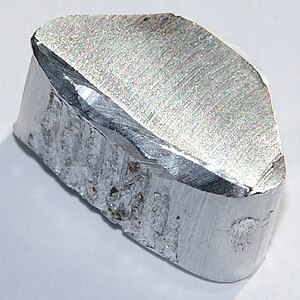Template:Infobox aluminium
Template:Infobox element/element navigation Template:Template reference list One of these is a named reference. It may be cited in the containing article as
- <ref name="CIAAW2016" /> for the source Atomic weights of the elements 2013 (from subtemplates used by {{Infobox element}})
Expression error: Unrecognized word "template".
- ↑ Lide, D. R. (2000). "Magnetic susceptibility of the elements and inorganic compounds" (PDF). CRC Handbook of Chemistry and Physics (81st ed.). CRC Press. ISBN 0849304814.
- ↑ D. C. Tyte (1964). "Red (B2Π–A2σ) Band System of Aluminium Monoxide". Nature. 202 (4930): 383. Bibcode:1964Natur.202..383T. doi:10.1038/202383a0.
- ↑ Dohmeier, C.; Loos, D.; Schnöckel, H. (1996). "Aluminum(I) and Gallium(I) Compounds: Syntheses, Structures, and Reactions". Angewandte Chemie International Edition. 35: 129–149. doi:10.1002/anie.199601291.
